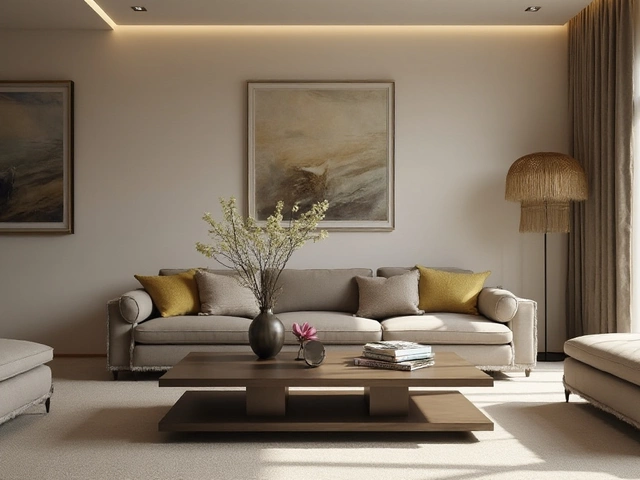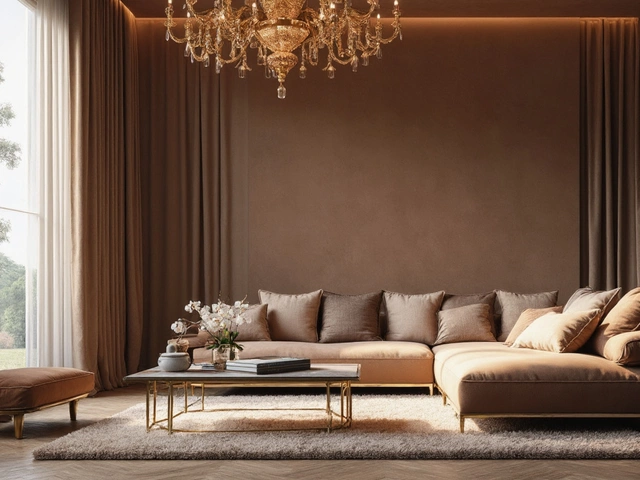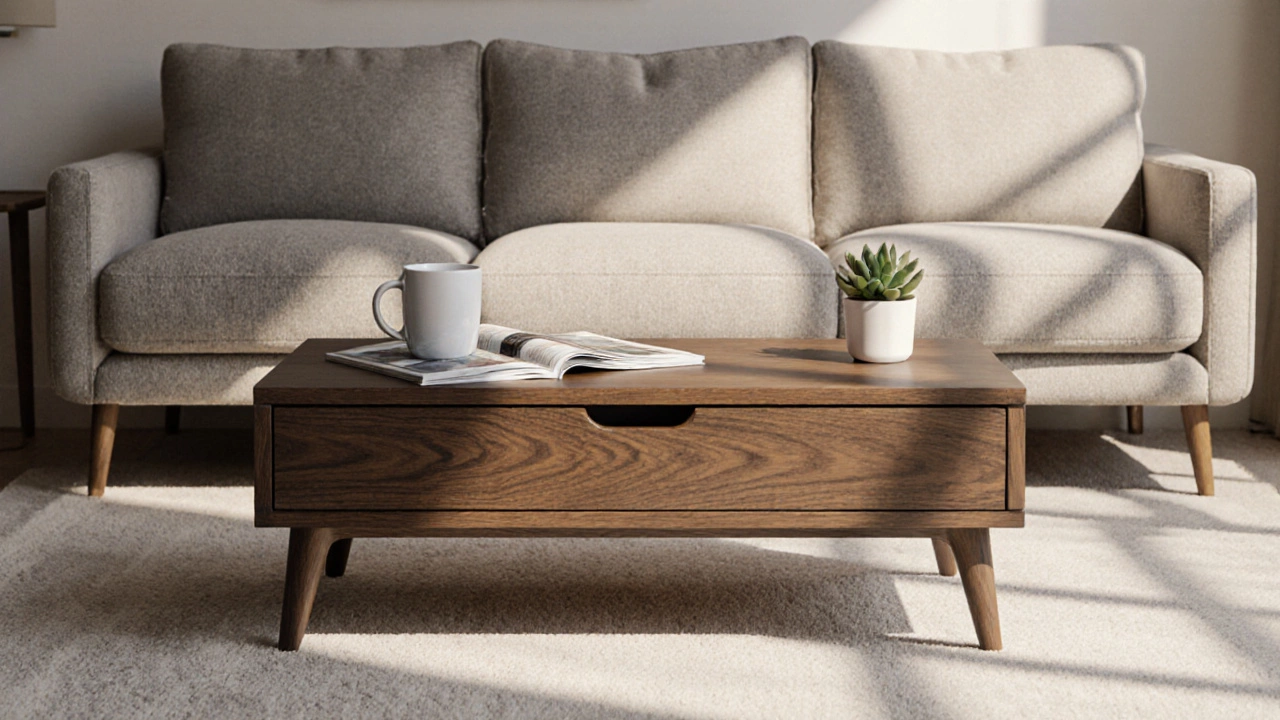
Coffee Table Drawer Orientation Calculator
How to Use This Calculator
Answer these 6 questions about your living room. We'll calculate which drawer orientation works best for your space based on accessibility, traffic flow, and design principles from the article.
When arranging a Coffee Table is a low, flat piece of furniture that typically sits in front of a sofa and serves as a surface for drinks, books, magazines, and décor. One of the trickiest decisions is which way the drawers should open. Do you want the drawer fronts to face the sofa, the TV, or stay neutral? The answer isn’t a one‑size‑fits‑all; it depends on traffic flow, ergonomics, and the overall vibe you’re after.
Why Drawer Orientation Even Matters
Drawers may look like a minor detail, but they affect three core aspects of a living room: accessibility, visual balance, and foot traffic.
- Accessibility - If the drawer faces the sofa, anyone sitting can reach items without standing up. That’s a win for casual coffee‑table books or remote controls.
- Visual balance - The drawer front becomes part of the room’s visual language. A drawer that faces the main seating area can either create a subtle focal point or add unwanted clutter, depending on style.
- Foot traffic - A drawer that opens into a high‑traffic path can snag shoes or cause scratches. Understanding how people move through the space is crucial.
Common Layout Patterns
Designers and homeowners usually fall into three camps:
- Drawer faces the sofa - Popular in small apartments where sitting comfort is prioritized.
- Drawer faces the TV or focal wall - Chosen when the coffee table doubles as a media console.
- Neutral orientation - Drawers open to the side or back, minimizing visual impact.
Each pattern has pros and cons. Below is a quick comparison to help you visualise the trade‑offs.
| Orientation | Pros | Cons | Best For |
|---|---|---|---|
| Faces Sofa | Easy reach while seated; creates a "ready‑hand" feel. | Can look bulky; may block view of decorative items. | Small living rooms, families with kids, casual spaces. |
| Faces TV/Focal Wall | Keeps the sofa side clean; integrates with entertainment setup. | Harder to reach from the sofa; may interrupt sight lines. | Media‑centric rooms, minimalist aesthetics. |
| Neutral (Side/Back) | Maintains clean visual lines; reduces risk of accidental bumps. | Less convenient for quick grabs; may waste usable surface. | Formal sitting areas, open‑plan layouts. |
Evaluating the “Face‑Sofa” Option
Let’s dig deeper into the scenario where the drawer faces the sofa. This layout works best when three conditions line up.
- Sofa is the primary seating element and people spend most of their time seated there.
- The room’s Living Room Layout encourages a clear traffic lane around the table rather than a circular flow.
- The Interior Design style is relaxed, with a focus on functionality over strict symmetry.
When these criteria match, a front‑facing drawer becomes a handy storage pocket for remotes, coasters, or the occasional snack.
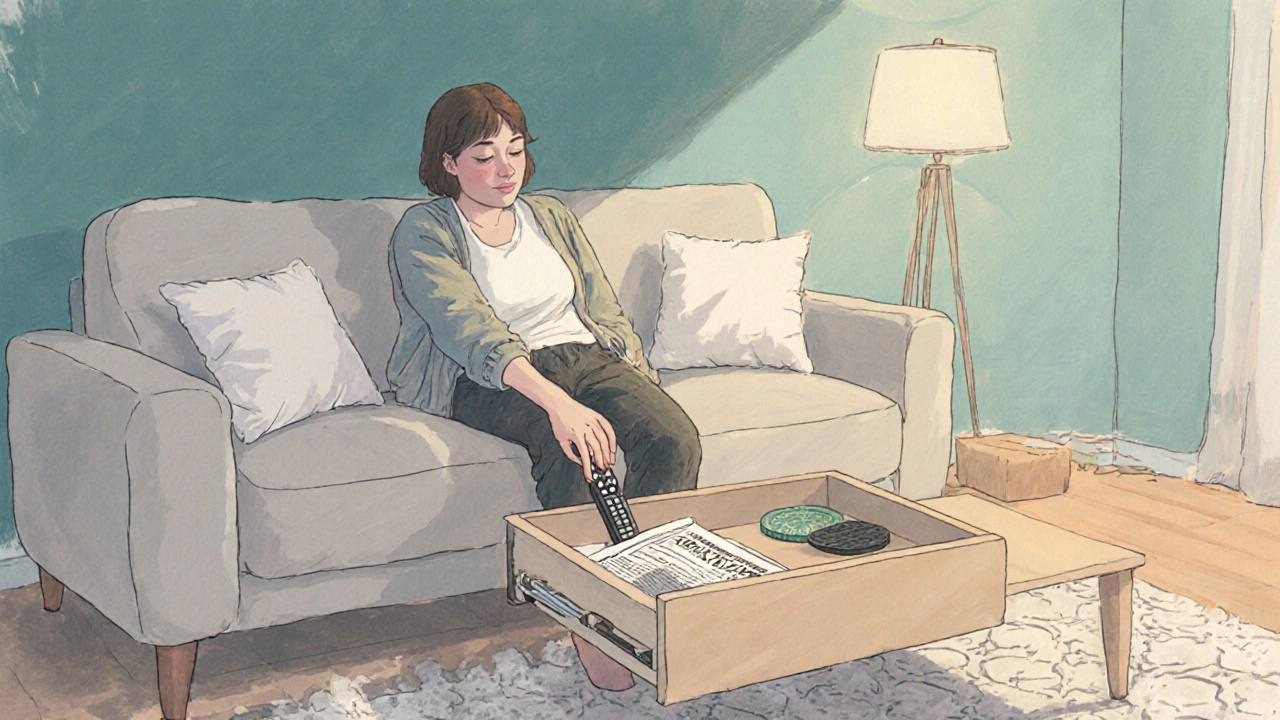
Practical Guidelines for Deciding Drawer Direction
Use the following checklist during your next living‑room makeover. Answer yes/no to each point; the more “yes” you get for a particular orientation, the better it fits your space.
- Do you often need items while seated (e.g., books, drinks, remote)?
- Is the sofa positioned directly opposite the coffee table without a side chair?
- Do you have a clear Traffic Flow pathway that runs perpendicular to the table?
- Is the drawer front designed to blend into the table’s surface (e.g., matching wood grain, hidden handles)?
- Will a drawer opening toward the sofa interfere with the visual line from the sofa to the TV?
- Are you comfortable with a slightly larger visual footprint on the sofa side?
If you answered “yes” to at least four of these, the drawer‑faces‑sofa layout is a solid choice.
Ergonomics and Comfort: The Science Behind Placement
Human‑centred design research shows that reaching forward from a seated position is easier than twisting or standing up. In ergonomic terms, this is known as reducing the “reach envelope.” A drawer that opens toward the sitter keeps the reach distance within 15‑20 inches, which is comfortably within the average adult’s arm span.
On the flip side, a drawer that opens away from the sofa can push the user into a forward‑leaning posture, especially if the drawer is deep. Over time, that posture can cause shoulder strain.
Therefore, from a health perspective, the coffee table drawer facing the sofa often wins, provided the drawer isn’t overly bulky.
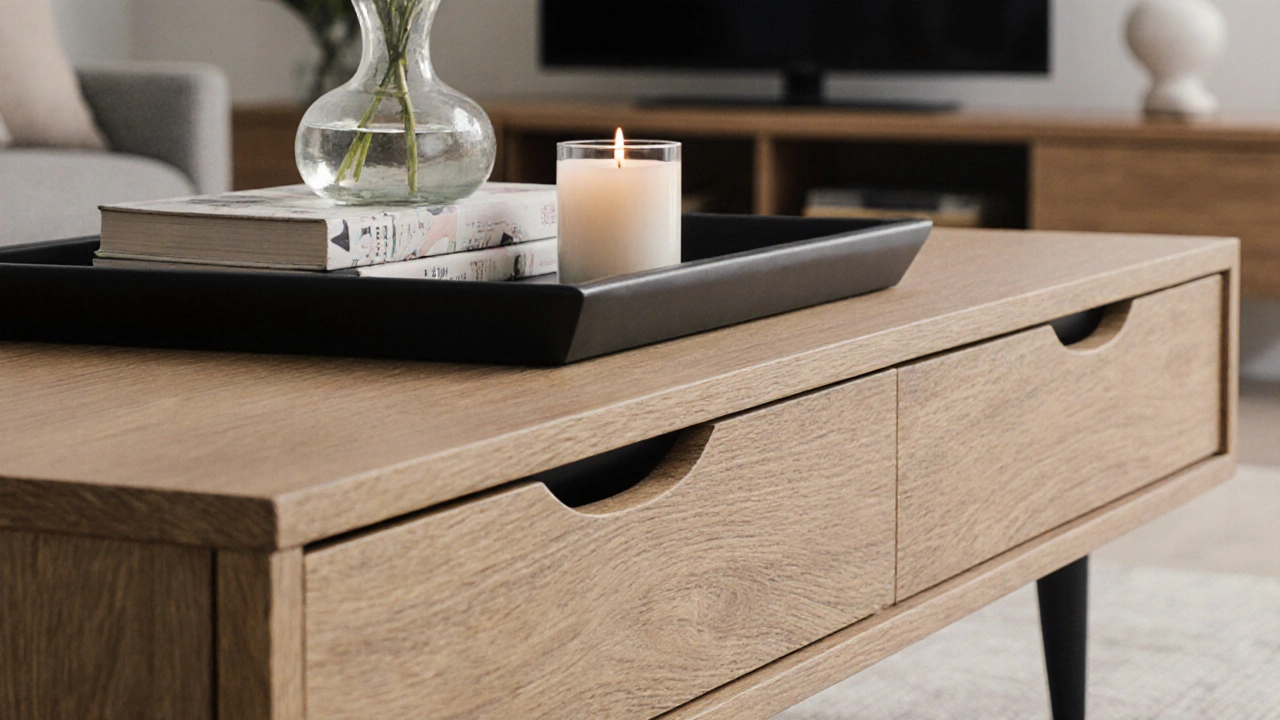
Styling Tips to Make a Front‑Facing Drawer Look Intentional
Even functional choices can look polished with a few design tricks.
- Handle Choices - Opt for recessed or sleek metal pulls that don’t jut out, keeping the front sleek.
- Drawer Front Finish - Match the table’s finish or use a contrasting colour to create a subtle accent.
- Declutter - Store only essentials inside. A drawer full of miscellaneous objects defeats the visual calm.
- Layer with Décor - Place a low tray or a small decorative box on top of the drawer. It disguises the hardware while adding style.
These touches ensure the drawer becomes a design feature, not an eyesore.
Space‑Planning Quick Reference
Here’s a concise decision‑tree you can sketch on a napkin.
- Identify the main seating spot (usually the sofa).
- Mark the traffic lane around the coffee table.
- Ask: “Do I need items handy while seated?” If yes, orient drawer to the sofa.
- If the answer is no, consider a neutral side opening.
- Check visual line to the focal point (TV or fireplace). Ensure the drawer doesn’t block it.
Follow the steps, and you’ll end up with a layout that feels both functional and aesthetically balanced.
Frequently Asked Questions
Can I install a coffee table with a drawer that opens both ways?
Yes, some modern coffee tables feature double‑action drawers that swing inward from both sides. This offers flexibility but adds complexity to the hardware.
What height should a coffee table be for optimal ergonomics?
Aim for a height that’s 1‑2 inches lower than the seat cushion of your sofa. For a standard 18‑inch sofa seat, a 16‑inch coffee table works well.
Is it okay to have a coffee table without any drawers?
Absolutely. Minimalist designs often omit drawers to keep the profile low and the visual flow uninterrupted.
How far should the coffee table be from the sofa?
Leave about 12‑18 inches of clearance. This allows people to slide in and out of the sofa comfortably while keeping the table within arm’s reach.
Do I need to consider the TV viewing distance when placing a coffee table?
Yes. The coffee table should not obstruct the line of sight between the sofa and the TV. If the drawer faces the sofa, keep the table shallow enough to stay out of the visual path.
Bottom line: there’s no universal rule, but by weighing accessibility, traffic flow, and style, you can decide whether the drawer should face the sofa or not. Take a quick inventory of your room’s habits, run through the checklist, and you’ll land on a layout that feels both practical and polished.


